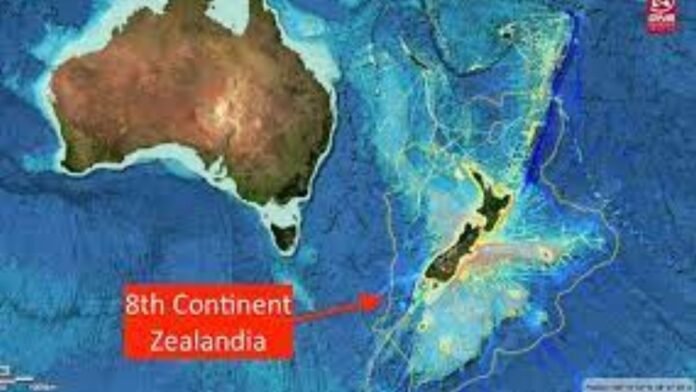A new continent, Zealandia, has been found. The continent, which is mostly underwater, covers 1.89 million square miles…
A continent unknown for 375 years was discovered by scientists. Zealandia, a submerged continent with islands like New Zealand, is mostly underwater. Zealandia was part of Gondwana 1 billion to 542 million years ago.
After centuries, geoscientists discovered Zealandia and mapped it more thoroughly. They studied ocean floor rock samples and published their findings in Tectonics, which studies Earth’s structure and evolution.
Zealandia is six times the size of Madagascar, covering 1.89 million square miles or 4.9 million square kilometres. The eighth continent discovered is the youngest, thinnest, and tiniest.
Andy Tulloch of the New Zealand Crown Research Institute GNS Science said, “This is an example of how something very obvious can take a while to uncover.”
Scientists have struggled to research Zealandia. Researchers took rock and sediment samples from the ocean floor, mostly from drilling sites and neighboring islands.
West Antarctica’s tectonic plate activity astonished scientists and may have affected other portions of Earth. Near the Campbell Plateau, an underwater plateau off New Zealand’s west coast,
Notably, no magnetic anomalies were identified in this area, contradicting beliefs concerning Earth’s crust movement along the Campbell Fault.
The revised Zealandia map shows volcanic activity, the continent’s structure, and other relevant aspects.
Zealandia was part of the 550-million-year-old Gondwana supercontinent. Gondwana covered most of the southern hemisphere.
A different team, including several of the same geologists, studied North Zealandia’s Fairway Ridge region in the South Pacific off Australia’s coast, its northernmost tip. Ancient volcanic and sedimentary rocks unaffected by dry land for 25 million years were studied. They found Early Cretaceous pebbles, Late Cretaceous sandstone, and Eocene basalts by studying their chemistry and radioactive isotopes, turning Zealandia into a region with distinct geological bands that align with West Antarctica. The subsequent investigation examined magnetic anomalies in the ocean floor surrounding Zealandia, shedding light on its ancient stretching and directional shifts that transformed it into an ultra-thin continent that submerged, offering tantalizing glimpses into its geological history, which is likely to unfold gradually due to its vast expanse.
Conclusion
New continent Zealandia was discovered by scientists after 375 years. Gondwana, a supercontinent formed between 1 billion and 542 million years ago, was primarily underwater and had islands like New Zealand. Zealandia was discovered and mapped using ocean floor rock samples after decades of obscurity. The eighth found continent is the youngest, thinnest, and smallest.
The researchers took ocean floor rock and sediment samples from drilling locations and surrounding islands. Tectonic plate activity was found in West Antarctica at the Campbell Plateau, an undersea plateau off New Zealand’s west coast. Despite speculations concerning Earth’s crust movement along the Campbell Fault, no magnetic anomalies were observed here.
Zealandia was part of the 550-million-year-old Gondwana supercontinent. North Zealandia’s Fairway Ridge region in the South Pacific off Australia’s coast was studied again. They found West Antarctica-aligned geological bands in ancient rocks. The next study studied magnetic anomalies in Zealandia’s ocean floor to understand its past stretching and directional shifts that made it an ultra-thin continent that drowned.



